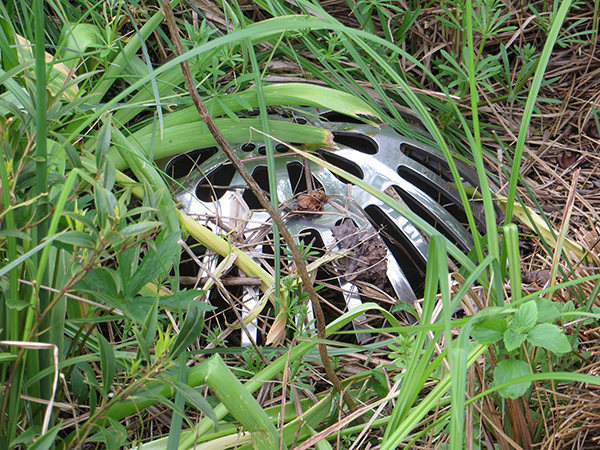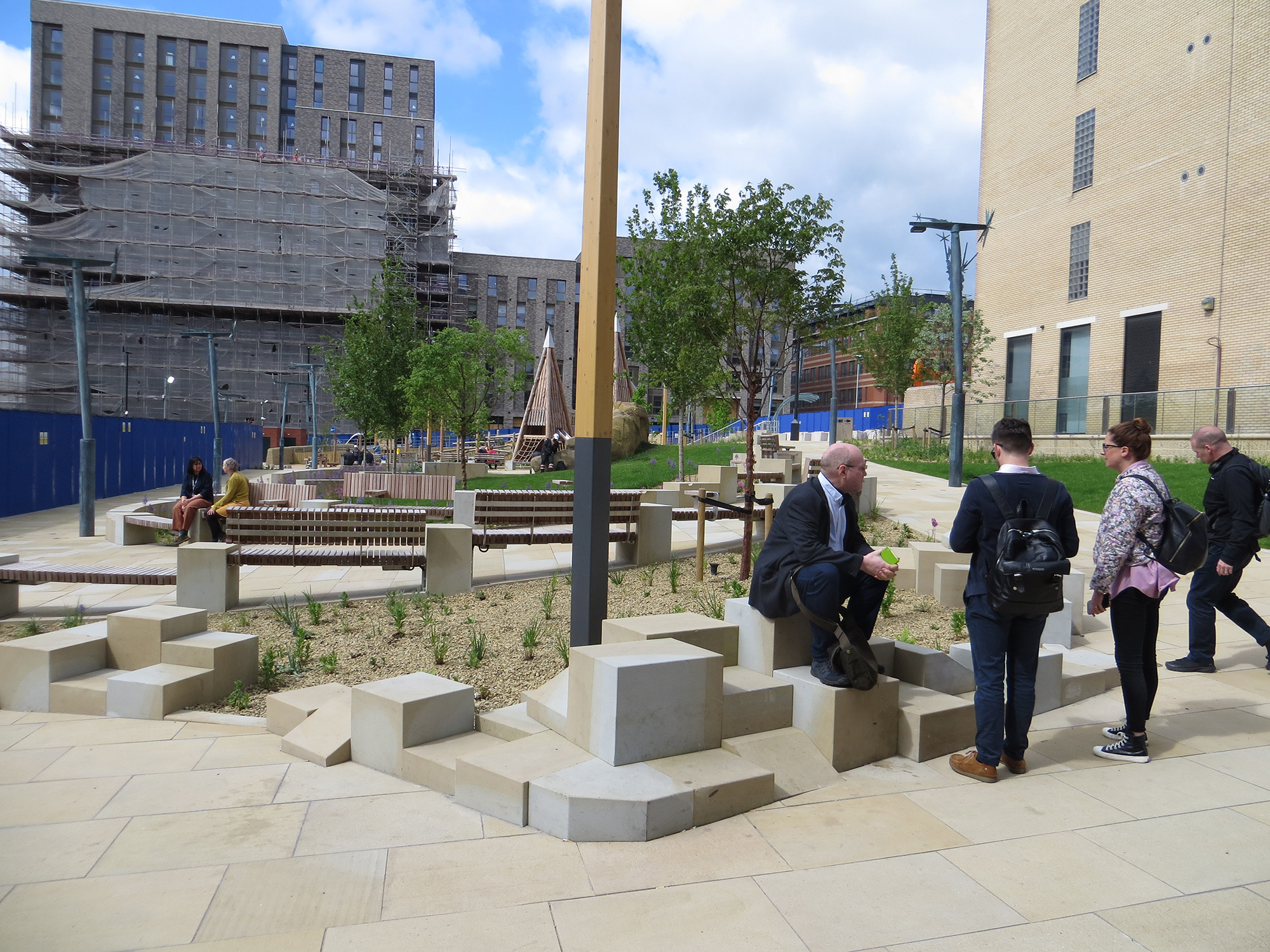Stone Federation hosted a walking tour of Sheffield's impressive natural stone public space landscape architecture, with Sheffield City Council's Senior Landscape Architect, Mike Brearley, talking about the schemes, on Wednesday (10 May) .
The tour started in Sheaf Square at the front of Sheffield railway station, which was the first landscaping scheme Mike Brearley was involved in when he joined the Council 20 years ago, then as assistant to Richard Watts, who was the Senior Landscape Architect on the project.

A major part of the scheme was a water feature constructed in Johnsons Wellfield Quarries’ Crosland Hill sandstone, although the water was turned off in 2020 in response to the Covid pandemic. It has never been turned on again, not least because when it was turned off the council saved the cost of running the fountains and with energy prices soaring since then it has not wanted to incur the cost again.
The project was the first in Sheffield for which Steintec supplied the mortars. And as Steintec Technical Director Steven Burton explained over the lunch at the Leopold Hotel the company provided at the end of the tour, it marked a significant development in pavement construction. Notably, it did not have expansion joints.
It was used as evidence of the efficacy of the modular paving system that was incorporated into the evolving BS 7533 standard for the design of pavements constructed with natural stone or concrete.
As Steve Burton said: “At that time we had established the dynamics of natural stone in modular pavements and the causes of failures as well as the solutions, which include considerations of the correct choice of stone itself, where technical properties differ, as well as the technical properties and requirements of the mortar, the importance of detail in the design and the correct methods of installation.”
Sheaf Square helped transform the reputation of stone from being seen as a problem product for hard landscaping to being the materials of first choice.
Mike Brearley led the Stone Federation party on to other notable projects in Sheffield, including Barkers Pool in front of the City Hall, where the bullets of a World War II Messerschmitt have left their mark in the stone of the war memorial; Hallam Gardens; the Natural Stone Award-winning Tudor Square; the tranquil Peace Gardens; and the new Pound Park, with, as well as the Crosland Hill stone, lamp posts created by the landscape architect and artist Julian Stocks that celebrate Sheffield’s steel-making legacy based on Julian's memories of the city’s steel works as a child.

Johnsons Wellfield’s sandstone, quarried in Yorkshire, features heavily in the projects in Sheffield and Mike Brealey said: “If stone can come from a local source it has to come from that local source.”
That is not to say all of the stone in the schemes do come from local sources. There is also plenty of Chinese granite, including the majority of the paving in Sheaf Square. Much of the Chinese granite in Sheffield has been supplied by Hardscape. Other stones featured include Caithness paving from Scotland, Lazenby red sandstone from Cumbria, Kilkenny limestone from Ireland for street furniture and, from Yorkshire, Green Moor.
Sheffield also has some particularly good examples of sustainable drainage schemes (SuDS) that other areas should take note of, especially with Schedule 3 of The Flood & Water Management Act 2010 likely finally to be implemented in England next year to try to reduce the amount of raw sewage flooding into rivers and coastal waters (click here to read more about SuDS).
One area of Sheffield that was given an extensive stone upgrade only 25 years ago in a scheme with a design life of at least 60 years is now scheduled for a redesign to incorporate a SuDS system, although Mike Brearley says: “I do want to re-use the stone. It would be almost a crime if we didn’t.”
Mike has made his own contribution to sustainable drainage by designing and 3D printing a drain cover specifically for one of his schemes. It was made in steel for him by Sheffield company Steel Line. It is pictured below.

The tour by Mike Brierley was highly informative, and would have been of benefit to architects, planners and landscapers all over the country, as well as to the students of Sheffield’s Hallam University who had been scheduled to join the tour but were kept away by a test being sprung upon them at the last minute.
For those who couldn’t make it, the short video below gives you a taste of Sheffield’s stone landscaping that you missed.

Steven Burton (left), Technical Director of Steintec, explained how Steintec helped change the perception of stone from a problem product to a durable, low-maintenance first choice for urban landscapes. On the right is Matt Robb from Stone Federation, who hosted the walking tour of Sheffield on 10 May.

